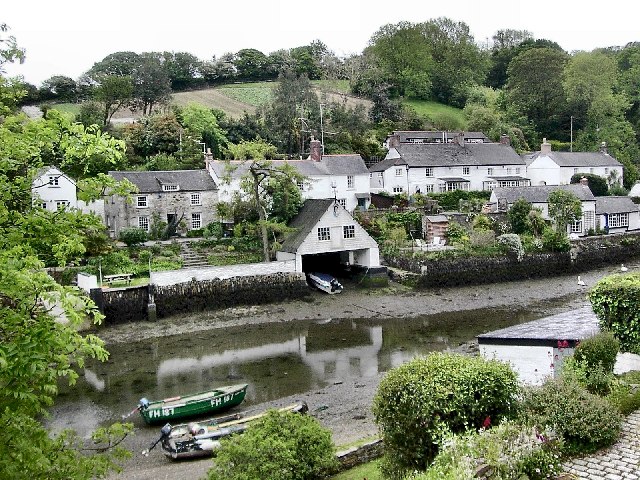Following the coast around from Porthoustock, you will notice a change in the nature of the coastline, because this stretch of the South Cornwall coast is characterised by the ‘rias’, or drowned river valleys, each with a subset of smaller creeks and inlets. If I were to make a list of my top five most idyllic spots in Cornwall, Helford would be in that list. Nestling on the south bank of the Helford River, this beautiful, peaceful village was, believe it or not, once a major port, receiving goods by ship from the continent. It even had its own customs house. Needless to say there was no shortage of pirates and smugglers wanting to get in on the act. One of the nearby creeks is Frenchman’s Creek, immortalised by Daphne du Maurier in her book of the same name.
Map of the area.
 |
Helford Village - geograph.org.uk - 9853. Photo by Richard Johns, via Wikimedia Commons.
|
No comments:
Post a Comment